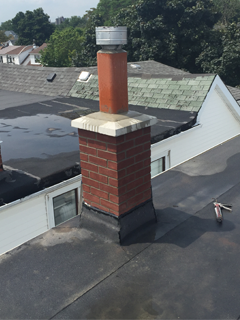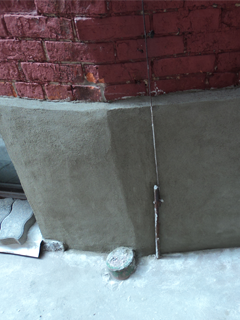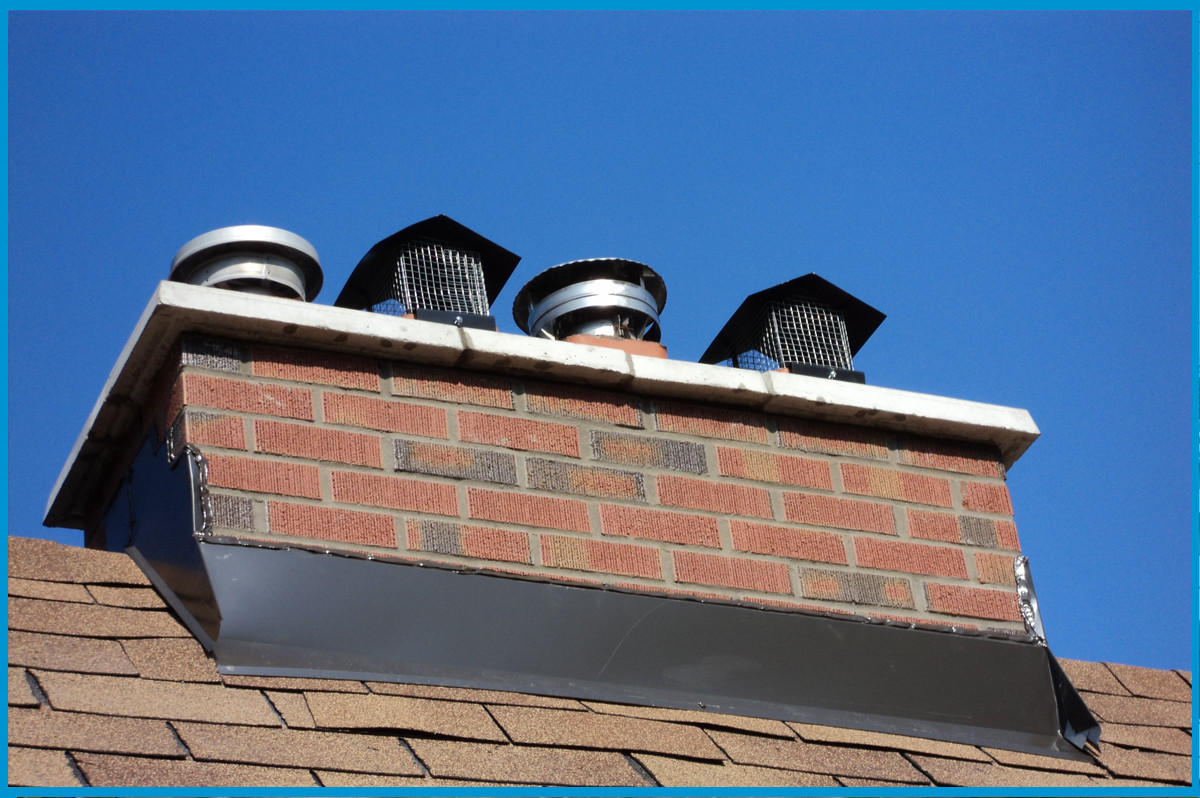Best Time To Conduct Masonry Repairs And Rebuilds?
There is an old phrase which is Toronto-centric but could apply to virtually any city in North America.
That phrase being: “It is either winter, or it is construction season”; could literally apply to any city or country that experiences an extended winter season. Specifically, where it concerns the masonry business, winter is generally not conducive to such work. However; the fact is new construction and high-rise development continue throughout the entire year.
So a more accurate statement would be that certain types of masonry work can be done in the winter months, providing that certain environmental considerations are prepared for in advance of completing such work.
Encapsulating a workspace with plastic tarps and providing auxiliary heaters is a method used for  pouring interior concrete floors or laying blocks and or bricks in winter months. The idea is to have consistent heat so that mortar does not freeze, and that installed masonry can cure. Although not ideal conditions, scheduling requirements of new construction often demand such solutions being used. And obviously, when heavy snow or bitterly cold temperatures are present, such exterior work simply cannot be done.
pouring interior concrete floors or laying blocks and or bricks in winter months. The idea is to have consistent heat so that mortar does not freeze, and that installed masonry can cure. Although not ideal conditions, scheduling requirements of new construction often demand such solutions being used. And obviously, when heavy snow or bitterly cold temperatures are present, such exterior work simply cannot be done.
Having said this, chimney rebuilding and or tuckpointing work, and certainly any exterior concrete-related work is most ideally completed during the warmer months only. In fact, masons working in our firm typically insist on it.
There are valid projects which can be done in colder months such as installing or remodeling interior fireplaces and hearths. The key is having a heated space, or the ability to heat a space such as a garage, where one can ensure mortar can be mixed appropriately.
In colder weather, it is the practice of some to mix anti-freeze into the mortar mix, which is not an ideal situation. It often results in white marks showing on the surface of a completed chimney. This again is not a practice our masons will subscribe to; preferring to defer such work until appropriate spring temperatures appear.
From a masonry installer’s perspective; having cooler dry weather is far more pleasant to work in, rather than the high humidity often occurring during summer months. The show must go on as they say, so in spite of these weather nuances, there are enough days filled with heavy rain, severely cold temperatures, and the like, that teams must forge on and get the work completed.
From a consumer purchasing masonry services; point of view, the winter can represent the best time to secure pricing and booking of services. Because masons in North America are in short supply, (* the average age of a skilled tradesman being fifty- two); their roster fills very quickly, and combined with a limited ideal installation season, can get backed up quickly.
Other weather considerations in relation to certain types of masonry work, have to do with frost leaving the ground. As an example; having to excavate, to complete waterproofing of foundations, or pouring concrete footings for retaining walls and masonry structures, is dependent on the ability to dig below the frost line, and for the proper compaction of base aggregates used in the process.
In the context of the Toronto market (but could equally apply to most eastern North American cities); the ideal time for planning and doing masonry work would be the following:
- Receiving and finalizing estimates (particularly for larger scope projects); January, February, March. This represents the period of time for which skilled masons have time to think and work out logistics for such projects, and to allocate their labour requirements.
- April through mid-November represents the best time to complete such work as tuckpointing and chimney rebuilding. These projects tend to be shorter duration, and not completely reliant on ground conditions.
- Stonework such as walkways, patios retaining walls, exterior facades, etc. are best completed from June to November, as ground conditions tend to be stabilized, and rain tends to be less likely; which can interrupt pouring footings, etc.
- Outdoor Pizza Ovens, stone patio kitchens, fire and water features are best started in May because of coordination requirements with gas and water utilities and can represent good mid-season type jobs, that can be completed in time to enjoy the summer season. Such projects can usually be completed before larger exterior terra projects are scheduled.
- Waterproofing and parging work, associated with foundations, typically is completed from April to mid-November; and is generally more critical in nature as water ingress can be a damage issue for consumers.
Of course, these guidelines assume normal weather patterns, and each year presents its own challenges pertaining to climatic conditions (ie: wet summers, etc). The moral of the story is to select your mason and plan your project well in advance of anticipated delivery.
pertaining to climatic conditions (ie: wet summers, etc). The moral of the story is to select your mason and plan your project well in advance of anticipated delivery.
Further to note is that southern and desert climates tend not to have as many complications relating to scheduling and the weather and that many of these projects can be undertaken at virtually any time in such climate regions.
Finally; when considering your masonry project as it relates to need, adding beauty and value, or restoring heritage; realize that your mason does not control the weather. He or she works with it, against it, and around it, so having patience and good nature, helps you receive a superior finished result, regardless of what Mother Nature dishes out.
To learn more about masonry contact www.avenueroadroofing.com

